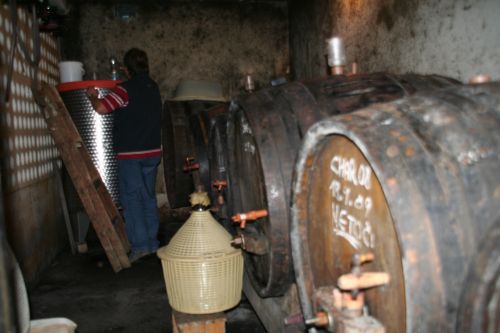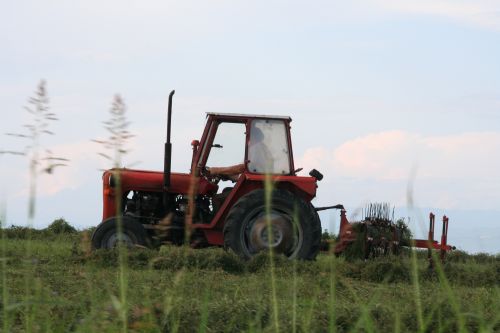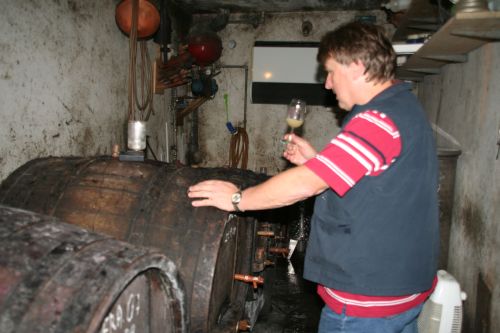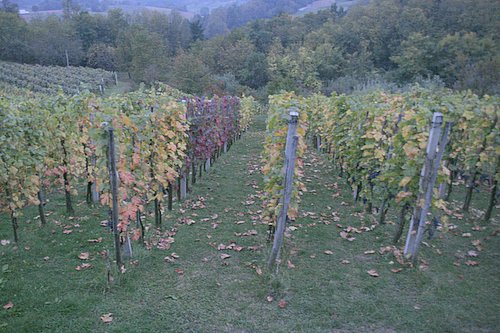The fermentation of must produces a large amount of carbon dioxide, which reduces the oxygen concentration in the air, so staying in unventilated wine cellars at that time can be life-threatening!
The police advise everyone involved in the production of must and juices to be particularly careful when processing products that require staying in unventilated areas, such as wine cellars. This is because elevated, harmful to health concentrations of gases are possible.
| We advise you to ventilate the rooms in which you use heating elements for cooking juices especially carefully, by making a draft several times a day, and above all, never do this task yourself. |
An increased concentration of carbon dioxide can be checked with a simple test. Place a burning candle in the room. If it goes out quickly, leave the room immediately and ventilate it well (at least 10 minutes, depending on the size of the room) by creating a draft.

Under normal conditions, carbon dioxide - CO2 is a colourless and odourless gas. It has a slightly sour taste, caused by the dissolution of carbon dioxide in the mucous membranes. We do not feel the gas when inhaling, so unconsciousness can overtake us before we become aware of the danger. It is denser than air, so it stays in basements. It is produced during complete combustion with a sufficient supply of oxygen, at cellular respiration and alcoholic fermentation.
Carbon monoxide - CO is produced during the incomplete combustion of organic substances (i.e. substances containing, for example, carbon). These are fossil fuels, such as petrol, natural gas, fuel oil, propane, coal, firewood, etc. With an insufficient amount of oxygen, it is produced in furnaces on solid, liquid and gaseous fuels, which are used for cooking and heating rooms. It is an extremely poisonous gas, which is particularly dangerous because humans cannot detect it with their senses, even at very high concentrations. It is odourless, colourless and tasteless. Even a very small amount of carbon monoxide in the air can be life-threatening. In milder forms of poisoning, the person just feels worse, has a headache, complains due to tiredness and helplessness. In severe cases, vomiting, visual disturbances, poor concentration, memory problems, disturbances of consciousness (up to coma) and heart rhythm, and breathing difficulties occur.
Important!
If CO or CO2 poisoning occurs, the person who has been poisoned must be helped out of the contaminated area as soon as possible. In doing so, it is necessary to take care of one's own safety by immediately opening all doors and windows, creating a draft and thus allowing oxygen to enter the room, while taking as few breaths as possible in the contaminated room.
Traffic safety advice - don't drive under the influence of alcohol!
When consuming alcoholic beverages, don't forget road traffic safety! Therefore, respect road traffic regulations and do not get behind the wheel under the influence of alcohol or other psychoactive substances (drugs, medicines) and thus ensure your own safety and the safety of other road users.
Pedestrians who are on the road should respect road traffic regulations in the case of reduced visibility, and at night they should be marked with reflective bodies or equipped with flashlights.
 You must also be extremely careful when driving the tractor!
You must also be extremely careful when driving the tractor!
Please note the following advice
- A tractor driver must not drive in road traffic if he is under the influence of alcohol or other psychoactive substances.
- In addition to the driver, another person may ride on the tractor only if for this purpose a passenger seat is installed on it, which is entered in the traffic permit. A child under one and a half years old must not be transported on the tractor.
- A maximum of five people can be transported on the trailer, if such transport is necessary for loading or unloading cargo. These persons must not be under the influence of alcohol, they must not stand, they must not sit on unsecured cargo, nor on cargo that extends over the sides.
- If seat belts are installed on the tractor, the driver and passengers must be fastened as prescribed.
- The safety arch (or safety cab) must be installed and designed in such a way as to protect the driver from injury if the tractor overturns, and must meet the prescribed standards.



